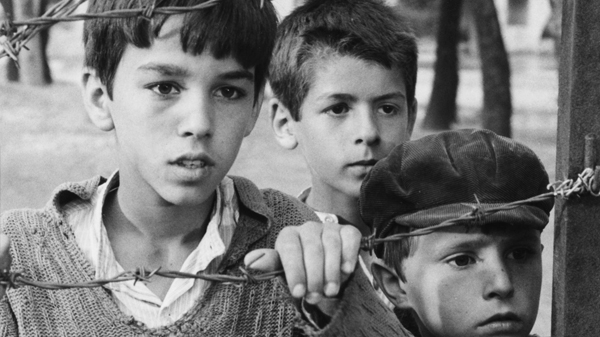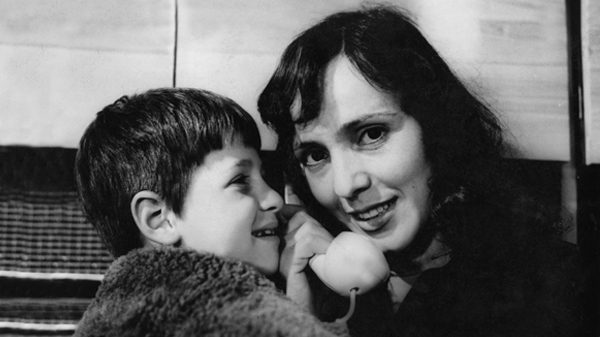Xhanfize Keko was a trailblazing voice in Albania, making movies that gave a voice to children and used a sophisticated perspective during a time that too often stifled any form of artistic expression. Jona Xhepa spotlights Keko’s singular legacy.
In recent months, the Danish Film Institute, in collaboration with the Albanian Cinematography Centre, remastered a trilogy of films by director Xhanfize Keko, which screened at the Tirana International Film Festival. Virtually unknown outside Albania, Keko was one of the founding members of the film studio New Albania, the state-owned institution for which she made over two dozen feature films from the 1950s to the 1980s. The studio was partly funded by the Soviet regime as throughout those years, Albania was in the grip of a brutal communist dictatorship within the Soviet block. For the first time, the country was producing homegrown cinema of which Keko was the only female director.
The filmmaker’s training began with newsreels, party political broadcasts, chronicles of workers and military exercises. Social realism permeated all art forms during the dictatorship years, but Keko imbued it with characteristic warmth honed from her years of observing humanity in close proximity. In the short reel of Working for the railway, she visits a camp in the town of Fier where young volunteers from around the country have gathered to build the railway.
This looks the same as any other of the many chronicles that would have been commissioned and sanctioned by the state, but there are also moments of real humanity. In a few instances, the women from the rural counties start chatting to those from the cities about their apprehensions, and the latter in turn admiring the others’ traditional dress. In what is essentially a piece of propaganda, Keko the chronicler turns into Keko the artist, her gaze focused on moments from which to elicit an intimacy engendered in mundane labour.
Her films always place focus on children. Little occurrences that signify a struggle to carve out a character’s place in a tumultuous world defined Keko’s penchant for turning mundane occurrences into art. Right and wrong are demarcated through the viewpoint of young protagonists, with the quiet ferocity that only their sense of righteousness can convey.
In Kryengritje ne Pallat, a bully destroys a little girl’s new toy and the other children in her building rally around her. For minutes at a time, the camera pans silently through close-ups of a toddler being fed, a young woman playing the violin, toys strewn about a room as the quiet spectators of a fight breaking out between two young brothers. The precocious boy trying to fix the toy decides to ostracise the bully from the children’s games, in an astute observation of youthful group think..This leads to a dream sequence which places the bully in a surrealist landscape, in which the toys he has tortured over his long career rise up to put him on trial.
Symbolically, the toys manifest as the boy’s friends who have now deserted him. The scene seems to reference, maybe even satirise, the ubiquitous peer-led trials of that era against individuals who were deemed to fall outside (communist) party lines; the boy’s long-suffering sister, a vision of goodness and virtue, finds the defendant guilty in a hilarious denouement.
Recent screening of her films worldwide have brought more international acclaim to the director. Keko’s work will feature in this year’s Crossing Europe festival in Austria, where three of her films will be presented alongside other works of Albanian cinema as part of Spotlight, a section of the festival reserved for a selection by a distinguished female working in cinema, which this year will be presented by contemporary Albanian director Iris Elezi. Filmmaker and critic Mark Cousins, who presented Keko’s work in his documentary A Story of Children and Film, said of her most famous film Tomka and His Friends that it “verges on the raw power of Italian neorealism while demonstrating the very particular flair of Albanian cine-lyricism”.
The movie revisits the motif of children righting the wrongs of the world through their games, but here the stakes are higher. Tomka and his friends rummage around their city Berat’s ancient fortress for bombs, bullets and other bric-a-bracs from the war left behind by the Italian fascist forces, when their game is interrupted by a barrage of incoming tanks in the distance. Tomka assures the gang it’s no longer the Italians, but the Germans that have come to invade. In this case, the game-disrupting oppressors the children have to contend against are the Nazis. The invasion is bad enough, but the Germans set up their camp on the boys’ football field – the final straw. The central fantasy, that revenge for a lost playground is tantamount to defeating the occupiers, is further testament to Keko’s ability to accentuate the heroic in the everyday.
Keko’s artless yet sophisticated perspective defines Tomka’s epic tableau: the camera sweeps over the boys’ backs as they sit on a wall and listen to the war while singing partisan songs in chorus with the gunfire; the children’s determined barefoot patter over the cobblestones echoes the Germans’ thundering boots; the boys’ bellows to each other to play over rooftops contrasts with the hushed voices of the townsmen in the resistance discussing their next move. In a scene reminiscent of the heroic rendition of “La Marseillaise” in Casablanca, the boys form a circle facing their tainted football field, singing and dancing to counterattack the Nazi propaganda blasted from the German camp.
For all her films, actors were chosen from local schools eventually forming a troupe of little thespians who affectionately referred to the director as Teta Xhano (auntie Xhano) a nickname that stuck in artistic circles even after her death in 2007. In the book Xhanfize Keko: according to her and 33 young actors, her actors, now grown, admit they still see themselves as Keko’s children. They write about her kindness, attention to detail, understanding of child psychology, artistic integrity.
One of her final films, the touching Kur xhirohej nji film, deals with the trying effects a young boy suffers after his parents’ marriage dissolves. The story unfolds during the shooting of a film in which the fictional boy himself plays a central role, from which the viewer could make out glimpses of Keko’s own experiences in the character of the female director’s assistant. The movie’s somewhat melodramatic scenes and maudlin dialogue, characteristic of that era’s cinematography, are eclipsed by the raw, funny performances of Keko’s children.
This is one of Keko’s films where she gingerly explores the role of women in Albanian society in the family. A simulacrum of feminism developed in the country during the filmmaker’s life; women were no longer only daughters, wives and mothers, but also major contributors to the workforce, on par with men.
Of course, this was in order to serve the state, to glorify the nation and had nothing to do with women’s rights, or anyone’s for that matter. Keko offers a vignette of tensions in a relationship, a marriage, the only way she could: in Kur, the husband grows increasingly wary and ultimately violent in regards to his wife’s increasing independence in her job, which requires her to conduct field work for stretches at a time and leaves her husband to look after the house. His young son pleads with him that his friends’ mothers are in a similar position and their fathers haven’t left home. The husband is shown in a bad light because he isn’t supporting his wife’s vital role as a member of the workforce, and her plight is given sympathy because she is grateful to the state for her emancipation.
Not much more insight is to be gleaned than would be in any other film of the time that dealt with tensions in the family. But, like in the railway chronicle, Keko turns her lens to small moments that help modern audiences understand the strains that the socio-economic reality of the time placed on relationships: the mother pleads her case with the female director’s assistant, who has herself gone through a similar experience with her own husband, showing a link in the collective struggle of emancipated women; the father’s co-worker urges him to rethink his views and accept the changes society is going through, marking a change in mentality around masculinity; the fights between the child’s parents are punctuated by scenes of camaraderie between the young boy and the only girl actor among the troupe, perhaps suggesting the new generation is re-evaluating gender roles.
Through the perspective of childhood, Keko could mask acute observation with charming naivete. She might have created a new movement in Albanian cinema had she continued to make films after the fall of the regime, or might have been given her dues among her contemporaries, had she lived in a different time and place.
Keko lamented the lack of movies for children in Albanian cinema, an absence that is still felt today. Her work was a touchstone in founding and embracing the genre, but it also placed a lens on ideas that would have gone unnoticed without her keen eye. For contemporary filmmakers who claim the advantages of artistic freedom and (relatively) better access to resources, Keko’s work is a fruitful reminder of the power of a fresh vision in a homogenous world.
Jona Xhepa (@quetzalfiach) is a writer and community events organizer based in Albania, who has had fiction and poems published in a number of journals. She’s currently working on a performance piece and a novella about communication.
READ ME is a platform for female-led writing on film hosted by Girls on Tops. Louisa Maycock (@louisamaycock) is Commissioning Editor and Ella Kemp (@efekemp) is Contributing Editor.



